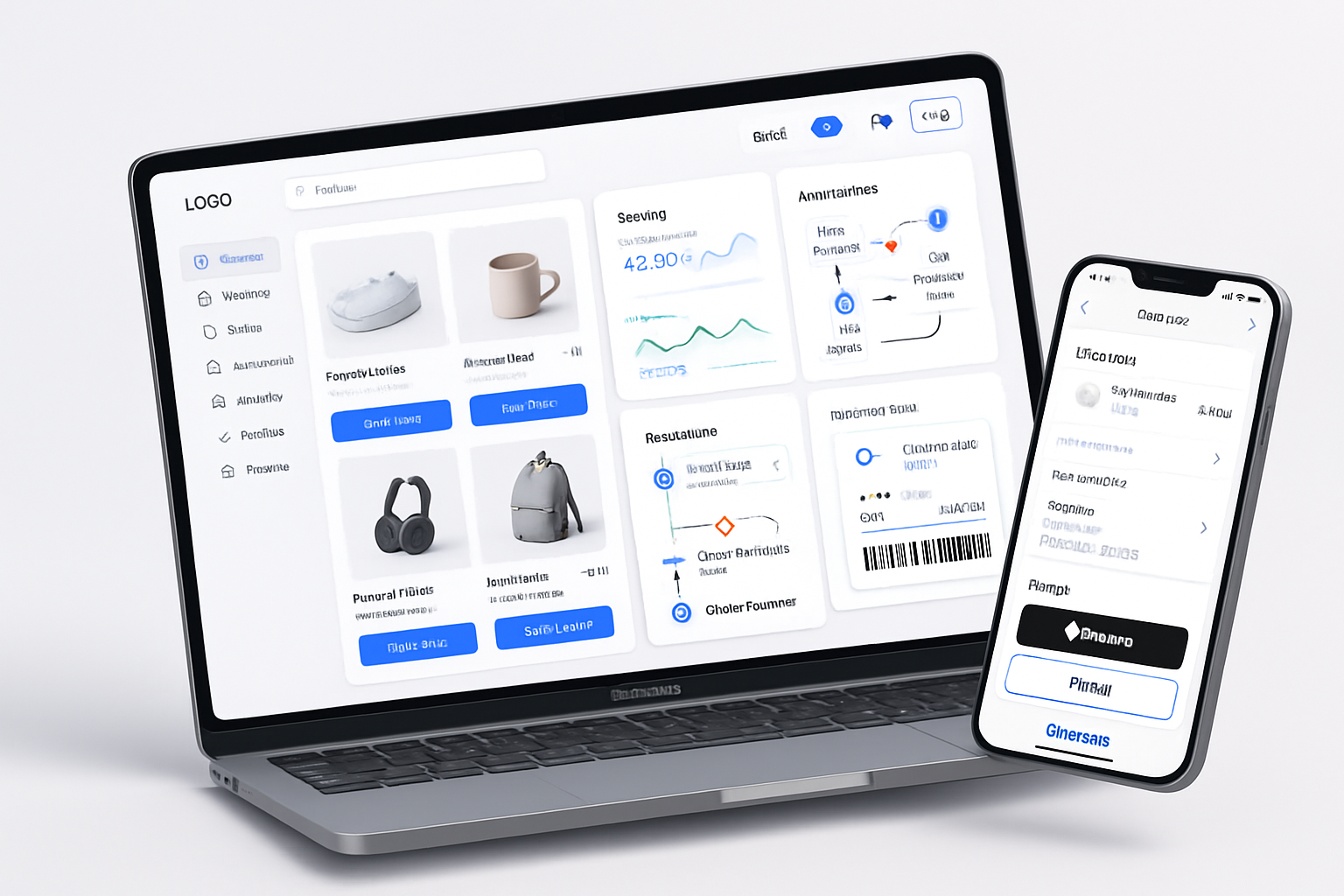· business · 8 min read
Unlocking the Hidden Features of Stripe: Tips You Didn’t Know Existed
Discover lesser-known Stripe features-Radar rules, Sigma reports, Test Clocks, usage-based Billing, Instant Payouts, and more-that help small businesses and freelancers reduce fraud, automate reconciliation, improve cash flow, and maximize revenue.

Why look beyond the basics?
Stripe is famous for its clean API and excellent docs, but many smaller teams only ever use the surface features: basic Checkout, a single subscription plan, or a simple PaymentIntent. Beneath that surface are features purpose-built to reduce fraud, automate reconciliation, accelerate testing, and scale marketplaces - all without hiring a payments engineer.
This guide surfaces those hidden or underused capabilities and gives actionable tips so freelancers and small businesses can squeeze more revenue, reduce disputes, and get back to focusing on customers.
Quick wins you can enable this afternoon
- Use prebuilt Checkout or Payment Links to accept payments without complex front-end work. See Stripe Checkout: https://stripe.com/docs/payments/checkout
- Add meaningful metadata to every charge (order_id, customer_reference, product_sku) so accounting and refunds are painless. Docs: https://stripe.com/docs/api/metadata
- Turn on Radar and configure simple rules to block high-risk traffic (country, IP, card velocity). Docs: https://stripe.com/docs/radar
- Enable Smart Retries and tune your retry schedule for subscription dunning to reduce churn. Docs: https://stripe.com/docs/billing/subscriptions/overview#automatic-collection
- Use Customer Portal so customers can manage subscriptions and invoices without building UI. Docs: https://stripe.com/docs/billing/subscriptions/customer-portal
1) Fraud protection that goes beyond the defaults (Radar)
Stripe Radar is powerful and often underused. Radar’s machine learning blocks a lot of bad transactions automatically, but you can create tailored rules for your business:
- Block by IP/geography when you know you don’t ship there.
- Block repeated failed card attempts from the same customer or IP.
- Use risk levels to present 3DS authentication only when necessary.
You can also add custom rules in the Dashboard or via API, and integrate with your own fraud signals via webhook events.
Resources: https://stripe.com/docs/radar
Tip: Combine Radar rules with dynamic descriptors (see below) to reduce dispute confusion - a clearer descriptor often reduces chargebacks.
2) Charge descriptors and dynamic descriptors - reduce confusion on bank statements
People dispute charges when they don’t recognize them. Stripe lets you set a statement_descriptor per charge or use dynamic statement descriptors so the charge reads as “YourBrand *Order1234” on bank statements.
Example when creating a PaymentIntent:
// Node.js example
const paymentIntent = await stripe.paymentIntents.create({
amount: 2000,
currency: 'usd',
payment_method: 'pm_card_visa',
description: 'Web development services',
statement_descriptor: 'YourBrand',
receipt_email: 'customer@example.com',
metadata: { order_id: '1234' },
});Docs: https://stripe.com/docs/payments/statement-descriptors
3) Stripe Billing: subscriptions that model real business usage
Many merchants only use flat monthly subscriptions. Stripe Billing supports far more:
- Metered billing (usage-based) - track usage for pay-as-you-go charging. https://stripe.com/docs/billing/subscriptions/metered-billing
- Tiered pricing - volume/tiered billing for more complex plans.
- Trials with Test Clocks - simulate time-forward scenarios for trial conversion testing. https://stripe.com/docs/billing/subscriptions/testing
- Dunning and Smart Retries - automated retry rules and email templates to recover failed payments. https://stripe.com/docs/billing/subscriptions/dunning
Example: create a subscription with a metered price:
// Pseudocode
const subscription = await stripe.subscriptions.create({
customer: 'cus_123',
items: [{ price: 'price_metered_abc' }],
expand: ['latest_invoice.payment_intent'],
});
// Report usage
await stripe.subscriptionItems.createUsageRecord('si_123', {
quantity: 5,
timestamp: Math.floor(Date.now() / 1000),
action: 'increment',
});Docs: https://stripe.com/docs/billing
Best practice: Set up automated emails on invoice payment failures and use custom retry schedules tailored to customer segments.
4) Stripe Connect: build a marketplace without reinventing payments
If you sell for others or operate a marketplace, Connect handles onboarding, payouts, KYC flows, and splitting funds.
- Use Express accounts for fast onboarding with minimal compliance burden.
- Choose the right charge model: Direct charges, Destination charges, or Separate charges and transfers depending on liability and tax needs. https://stripe.com/docs/connect
Tip: Use Connect’s capabilities to automate tax reporting (with Stripe Tax) and handle onboarding flows for sellers.
Docs: https://stripe.com/docs/connect
5) Stripe Tax: automatically calculate sales tax and simplify compliance
Stripe Tax calculates taxes, collects them, and can create proper invoice lines for multi-jurisdiction sales. It also supports automatic tax ID collection in certain regions and automates tax reporting exports.
Docs: https://stripe.com/docs/tax
Tip: Turn on Stripe Tax for digital goods or SaaS that cross state or country borders - it’s much cheaper than hiring a tax consultant for every jurisdiction.
6) Sigma: custom SQL reports over your Stripe data
Sigma is Stripe’s built-in analytics/SQL tool that lets you write queries over payments, disputes, refunds, payouts, and more. It can save you time and money compared to building your own ETL for basic reconciliation.
Example query to see daily successful payments by method:
SELECT
date(created) AS day,
payment_method_details ->> 'type' AS method,
sum(amount)/100.0 AS total_amount
FROM charges
WHERE status = 'succeeded'
GROUP BY day, method
ORDER BY day DESC
LIMIT 30;You can schedule Sigma reports and export CSVs to accounting or Slack. Docs: https://stripe.com/docs/sigma
7) Webhooks and security: keep your systems in sync safely
Webhooks are how Stripe informs your backend about events (successful payments, disputes, invoice.payment_failed, payout.failed). Best practices:
- Always verify webhook signatures using the endpoint’s signing secret. https://stripe.com/docs/webhooks/signatures
- Use idempotency keys for API calls that might be retried.
- Keep webhooks lightweight - enqueue work and process heavy tasks asynchronously.
Node verification example (snippet):
const endpointSecret = 'whsec_...';
try {
const event = stripe.webhooks.constructEvent(
requestBody,
sigHeader,
endpointSecret
);
// handle the event
} catch (err) {
// invalid signature
}Docs: https://stripe.com/docs/webhooks
8) Metadata and reconciliation: make refunds and bookkeeping painless
Metadata is your friend. Add structured identifiers to every charge, invoice, and customer:
- order_id, product_sku, sales_channel, salesperson
- external_account_id for marketplace sellers (Connect)
Combine metadata with the Balance Transactions API to map Stripe payouts back to invoices and bank deposits for reconciliation: https://stripe.com/docs/api/balance_transactions
Sigma + metadata = reconcile in minutes instead of hours.
9) Test Clocks and robust testing for time-based flows
If you use subscriptions or scheduled invoices, Test Clocks let you accelerate time in test mode to simulate trial expirations, invoice generation, subscription renewals, and proration behavior without waiting weeks.
Docs: https://stripe.com/docs/billing/subscriptions/testing#test-clocks
Use them to validate dunning behavior, retries, and proration logic before going live.
10) Instant Payouts, payout schedules, and cash flow control
For freelancers or sellers who need faster access to funds, Stripe offers Instant Payouts to cards (fees apply). You can also configure payout schedules (daily/weekly/monthly) per account.
Docs: https://stripe.com/docs/payouts
Tip: Combine predictable payout schedules with Sigma reports so your bookkeeping matches timing of bank deposits, not charge events.
11) Stripe Issuing and virtual cards (advanced cash management)
If you run a business that reimburses contractors or wants expense cards for staff, Stripe Issuing can create virtual and physical cards you control via API. It’s a powerful way to automate vendor payments and expense controls.
Docs: https://stripe.com/docs/issuing
12) Built-in customer experiences: Checkout, Billing Portal, and Payment Links
- Stripe Checkout handles 3DS, local payment methods, and localization with minimal dev time. https://stripe.com/docs/payments/checkout
- Customer Portal lets customers manage subscriptions, billing, and payment methods without a dev build. https://stripe.com/docs/billing/subscriptions/customer-portal
- Payment Links are great for one-off products and services - create links in the dashboard and share via email. https://stripe.com/docs/payments/payment-links
These reduce churn from payment friction and let you focus on product and sales.
13) Mobile SDKs and best practices (iOS / Android)
Stripe’s mobile SDKs (Payments SDK, Wallets) include features like SCA handling, Apple Pay / Google Pay integration, and prebuilt UI components to reduce PCI scope and improve conversion. https://stripe.com/docs/mobile
Tip: Use Stripe Elements or SDKs to avoid handling raw card data - it drastically reduces compliance scope.
14) Disputes: automate evidence collection and reduce chargebacks
Stripe guides you through building evidence payloads for disputes and can automatically submit certain evidence types (receipts, shipping info). Combine this with clearer descriptors and proactive customer support to reduce costs. https://stripe.com/docs/disputes
15) Team management, RBAC, and SSO
Grant only needed permissions to team members. Use role-based access controls and SSO for security as you scale. Stripe supports fine-grained roles and SSO integrations for business accounts. https://stripe.com/docs/dashboard/team
Example: Putting it together for a freelance SaaS seller
Scenario: You sell a SaaS product with a free trial, usage-based overage billing, and need fast reconciliation.
Steps:
- Use Checkout for initial sign-up and create a Customer object.
- Create a subscription with a metered price and set trial period. Use Test Clocks to validate lifecycle.
- Add rich metadata on invoices (order_id, variant) for accounting.
- Turn on Stripe Tax for multi-state tax calculation.
- Configure Smart Retries and email dunning flows for failed invoices.
- Schedule a Sigma report to export daily payouts and map to balance transactions for reconciliation.
- Protect checkout with Radar rules and set dynamic statement descriptors.
- Offer Instant Payouts option for selected customers/sellers if they need cash earlier.
This setup minimizes manual work, reduces disputes, and improves cash visibility.
Practical checklist before going live
- Use Checkout or Elements to limit PCI scope.
- Add metadata to every payment/invoice.
- Set proper statement descriptors.
- Configure Radar rules tailored to your merchant risk profile.
- Enable Smart Retries and test dunning flows.
- Schedule Sigma reports for daily/weekly reconciliation.
- Set up webhook signature verification and logging.
- Test subscription behavior with Test Clocks.
- If running marketplace flows, pick the correct Connect charge model.
- Consider Stripe Tax for cross-jurisdiction sales.
Further reading and official docs
- Stripe Radar: https://stripe.com/docs/radar
- Billing & Subscriptions: https://stripe.com/docs/billing
- Connect: https://stripe.com/docs/connect
- Checkout: https://stripe.com/docs/payments/checkout
- Webhooks & signatures: https://stripe.com/docs/webhooks
- Sigma: https://stripe.com/docs/sigma
- Stripe Tax: https://stripe.com/docs/tax
- Instant Payouts & Payouts: https://stripe.com/docs/payouts
- Disputes: https://stripe.com/docs/disputes
Unlocking Stripe’s lesser-known features doesn’t require large engineering teams - it requires knowing where to look and how to compose what Stripe offers into practical flows. Start with the quick wins (metadata, Checkout/Payment Links, Radar) and iterate: add Sigma for reconciliation, Test Clocks for subscription testing, and Connect/Tax as your business complexity grows.
Go enable one of these today and measure the win: fewer disputes, faster reconciliations, or a smoother checkout - those small wins compound into meaningful ROI.



